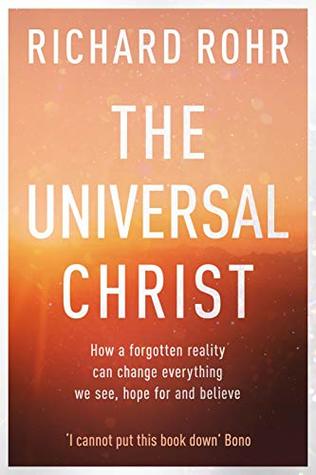More on this book
Community
Kindle Notes & Highlights
by
Richard Rohr
Read between
October 24 - December 14, 2021
indwelling of the Divine Presence in everyone and everything since the beginning of time as we know it: I was in an underground train, a crowded train in which all sorts of people jostled together, sitting and strap-hanging—workers of every description going home at the end of the day. Quite suddenly I saw with my mind, but as vividly as a wonderful picture, Christ in them all. But I saw more than that; not only was Christ in every one of them, living in them, dying in them, rejoicing in them, sorrowing in them—but because He was in them, and because they were here, the whole world was here
...more
That word is Christ. What if Christ is a name for the transcendent within of every “thing” in the universe? What if Christ is a name for the immense spaciousness of all true Love? What if Christ refers to an infinite horizon that pulls us from within and pulls us forward too? What if Christ is another name for everything—in its fullness?
A cosmic notion of the Christ competes with and excludes no one, but includes everyone and everything (Acts 10:15, 34) and allows Jesus Christ to finally be a God figure worthy of the entire universe. In this understanding of the Christian message, the Creator’s love and presence are grounded in the created world, and the mental distinction between “natural” and “supernatural” sort of falls apart. As
Most of the perennial traditions have offered explanations, and they usually go something like this: Everything that exists in material form is the offspring of some Primal Source, which originally existed only as Spirit. This Infinite Primal Source somehow poured itself into finite, visible forms, creating everything from rocks to water, plants, organisms, animals, and human beings—everything that we see with our eyes. This self-disclosure of whomever you call God into physical creation was the first Incarnation (the general term for any enfleshment of spirit), long before the personal,
...more
John’s Gospel was more accurate than we realized when it described Christ as “a light that darkness cannot overcome” (1:5). Knowing that the inner light of things cannot be eliminated or destroyed is deeply hopeful.
Christ Mystery is not a one-time event, but an ongoing process throughout time—as constant as the light that fills the universe. And “God saw that light was good” (Genesis 1:3). Hold on to that!
But God loves things by becoming them. God loves things by uniting with them, not by excluding them.
Jesus is a map for the time-bound and personal level of life, and Christ is the blueprint for all time and space and life itself.
If all of this is true, we have a theological basis for a very natural religion that includes everybody. The problem was solved from the beginning. Take your Christian head off, shake it wildly, and put it back on!
Faith, hope, and love are the very nature of God, and thus the nature of all Being. Such goodness cannot die. (Which is what we mean when we say “heaven.”) Each of these Three Great Virtues must always include the other two in order to be authentic: love is always hopeful and faithful, hope is always loving and faithful, and faith is always loving and hopeful. They are the very nature of God and thus of all Being. Such wholeness is personified in the cosmos as Christ, and in human history as Jesus. So God is not just love (1 John 4:16) but also absolute faithfulness and hope itself. And the
...more


